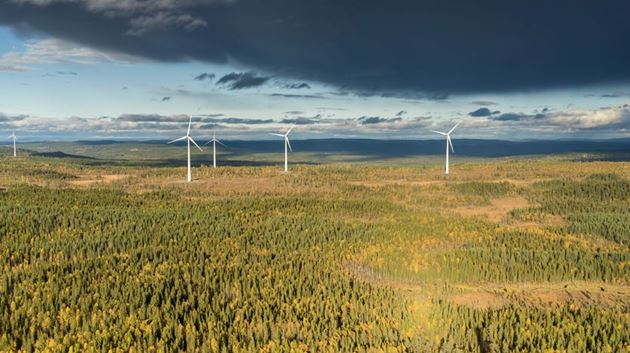
On 17 May WindEurope CEO Giles Dickson opened the Energy Day of the CEE (Central and Eastern Europe) Sustainable Finance Summit in Prague and highlighted the wind energy potential in the region. The share of wind in the region’s electricity mix is below the 17% average for Europe. But there is a clear increase in political support and the number of new wind farms under development in different countries.
Central and Eastern Europe has only 7% of the EU’s total wind energy capacity, and Government targets and support have been less than the EU average. But there are signs of increasing political ambition on renewables across the region. And there is a lot of activity on project development, led local and regional developers, with many willing to go merchant or with PPA if necessary.
Romania and Serbia plan to start CfD auctions for onshore wind this year. Romania also plan to introduce a legal framework for offshore wind and start offshore auctions asap. Slovakia and Czechia have legislated for CfD auctions. Lithuania is building lots of new onshore wind, and a number of onshore projects are under development in Estonia and Latvia. All 3 Baltic States have major ambitions on offshore wind, for domestic use and for export – and Lithuania have started their first auction.
Poland disappointed by reducing its 10h distance rule to only 700m not the 500m the Government had promised. But it was a move in the right direction, onshore projects are being developed, and we hope that 700m will not be the end of the story. And offshore wind in Poland is powering ahead: we expect the first projects to be built in 2026-27 with final investment decisions this year.
In Bulgaria at least two large regional developers are pursuing onshore projects. The Government is ready to support once grid capacity – and with auctions once there’s a coalition with a parliamentary majority.
Projects are being developed even in Slovenia, which has only 3 MW and the strongest restrictions on where wind farms can be built.
All these countries now see that wind is cheap and is good for energy security. The think-tank Ember have said more wind capacity will reduce electricity prices in the region by almost a third. Many of these countries see benefits from developing local wind supply chains. And public opinion is on their side. Three-quarter of Poles now support the expansion of onshore wind close to their home.
This year’s revision of the EU’s National Energy and Climate Plans (NECP) is likely to see an increase in wind targets for 2030 across Central and Eastern Europe: e.g. the Romanian Government intend to raise their 2030 RES electricity target from 30.7% in their current NECP to between 34% and 38%.
Hungary and Czechia are focusing strongly on nuclear. But Poland and Romania see a role for both nuclear and wind.
All the countries in the region still have work to do on the simplification of permitting, notably to implement the new EU rule on this. But then this is outstanding homework still for nearly every other Government in Europe.
Grid expansion is also a major challenge in the region, as it is elsewhere. And TSOs need to take a more flexible approach to the award of grid connection permits.
And key issue will be to reassure Governments and project developers in Central and Eastern Europe that the European supply chain can deliver the increased number of wind farms they want. Chinese manufacturers have now won orders in Croatia, Romania, Serbia and Bosnia and are targeting the Balkans as an entry point to the European market.
We have long talked about the potential of Central and Eastern European markets. The growing Government support and increasing level of project development in the region show the potential is now starting to be realised – which presents major opportunities for the European wind industry.